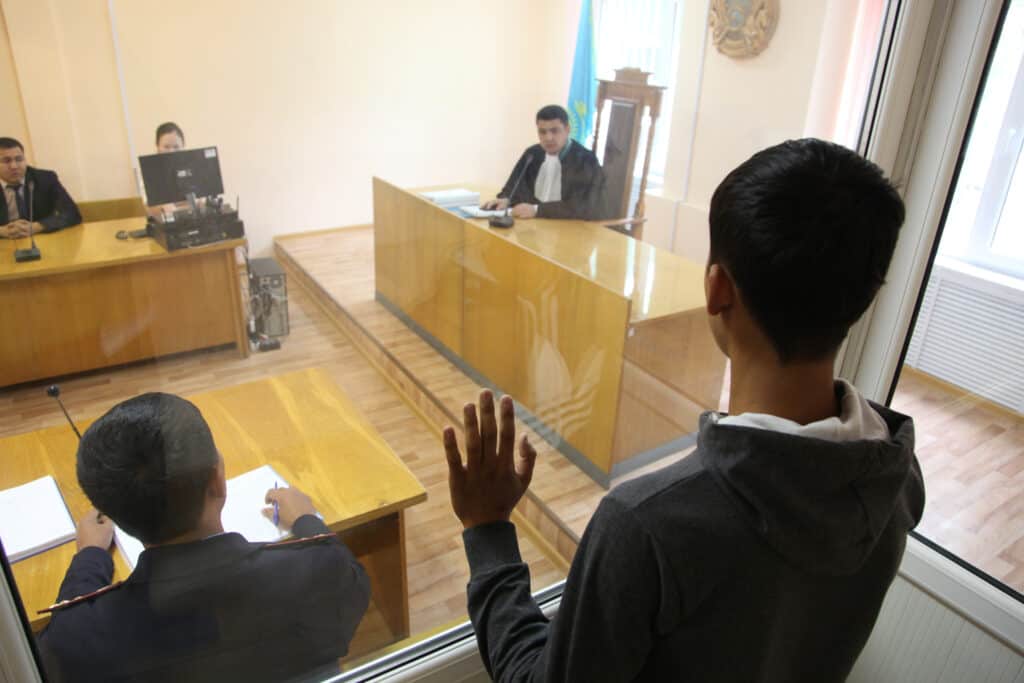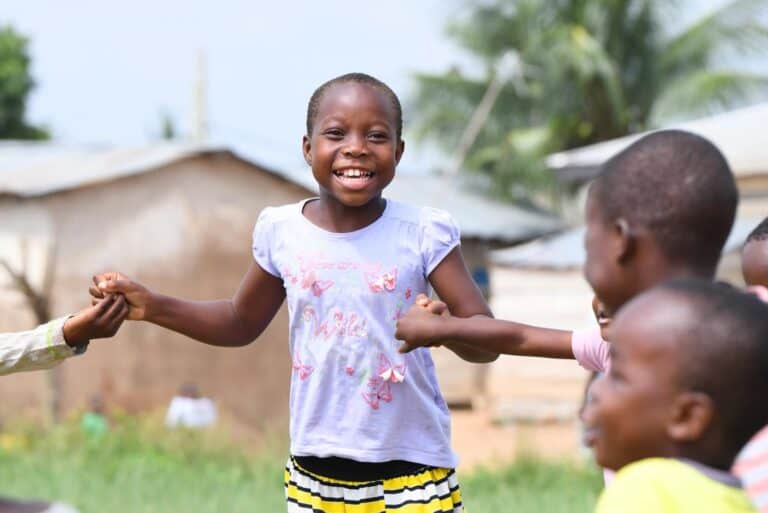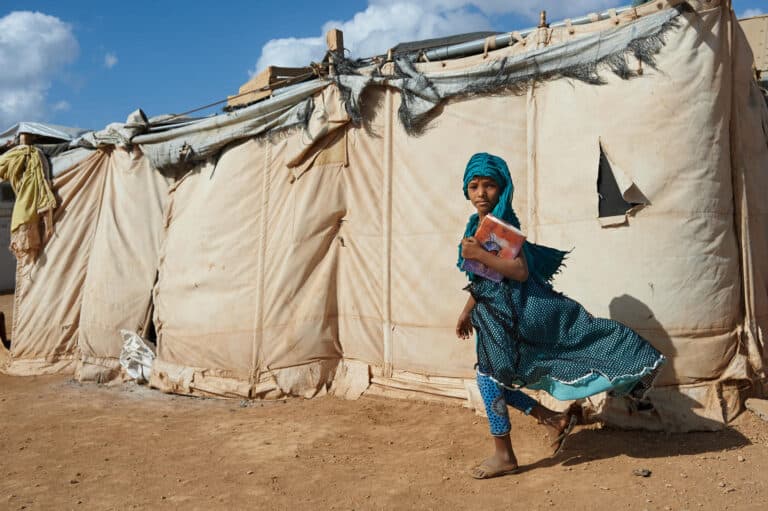Children in every country deserve fair, humane, age-appropriate treatment when encountering their nation’s justice system. Systematically monitoring and evaluating these systems is a necessity.
Safeguarding children who come into contact with the law — whether as victim, perpetrator, witness or parties in court proceedings — is a vital component of a healthy, well-functioning child protection system. But how do we effectively monitor and evaluate the impact of justice policies and procedures related to children? Administrative records and reporting offer government officials and institutions the tools to do so, keeping track of how children are being treated by the system and the circumstances pertaining to these children’s situations.
Without these important data, children in many situations may needlessly suffer in the justice system. Children in conflict with the law may face long periods deprived of liberty, separation from their families, and sentences that do not take into account their welfare and rights. Lack of child-friendly and sensitive procedures adapted to the needs of children, their age and maturity, cause further traumatisation of children appearing in court proceedings. Poorly maintained records and incomplete reporting can also expose children to danger. When crime reporting is so weak that prosecutors do not have sufficient information to move a case forward, when registry safeguards do not ensure that abusers stay away from areas where children congregate, or when a child must repeatedly describe and relive a trauma because of poor record-keeping, children pay the price. And perpetrators are offered the chance to act with impunity.
Learning from five contexts
To support governments and other stakeholders to strengthen the collection and use of records and reports on children in contact with the law and improve monitoring and evaluation, UNICEF’s Data and Analytics section in collaboration with four country offices examined specific scenarios in Uruguay, Montenegro, Tanzania and Jordan. The same review was also done in Canada, in consultation with the Canadian Centre for Justice Statistics at Statistics Canada, the Department of Justice and the Centre for Surveillance and Applied Research of the Public Health Agency of Canada. The review entailed visits to each of the five countries. These exercises aimed to deepen understanding of gaps in the systems while also extracting good practices. The analysis yielded on-the-ground, real-life examples of child justice systems at work in a variety of cultural and socioeconomic contexts, providing insight into what works and what does not.
Uruguay: A multi-stakeholder governance structure
In Uruguay, the Supreme Court of Justice, the National Prosecutor’s Office, the Ministry of the Interior, the National Institute for Adolescent Social Inclusion, and UNICEF — the country’s key juvenile justice stakeholders — signed an inter-institutional agreement in April 2018 to create a unique national information system. This system standardizes data categories and codes as well as defines roles and responsibilities in data collection and processing for each institution. Since the agreement, each of the signatory institutions has been collecting and processing a set of 34 indicators that provide information on adolescents who come into conflict with the law as per the country’s regulatory framework. Each institution is responsible for specific indicators and — using a manual developed to implement the agreement — have access to clear instructions regarding definitions and codes. The signatories have committed to provide annual updates to UNICEF with the information collected and processed. This provides a model of an inter-institutional data governance structure that ensures that definitions and stratification are consistent across the various stakeholders, and limits duplication of data in reporting.
Montenegro: Data linkages, integration and interoperability
Montenegro presents a good example of a country making progress to develop linkages between different database systems. To implement justice system reform, each sector that provides services to children who come into contact with the law is improving its ICT systems and, where possible, making its databases interoperable with other institutions. For example, the Judicial Information System currently being developed will be able to include indicators related to all children in criminal, civil and administrative proceedings and exchange information with the Institute for the Execution of Criminal Sanctions (corrections) and the Supreme State Prosecution’s Office. The new domestic violence database is expected to enable seamless integration of police reporting and social welfare client services for victims of domestic violence, including children.
Tanzania: Improving infrastructure and data management tools
Tanzania provides a good example of efforts to improve infrastructure and tools through its Judiciary Statistical Dashboard System, a web-based, electronic filing and database system hosted by the government intranet. It allows for charge sheets and complaints to be uploaded. It also recently began to accept e-filings from advocates and electronic payment for court filing. It functions not only as an electronic system for registering and coordinating cases but also as a judgment database. The dashboard also serves as a case management system while and has the ability to send SMS summonses and reminders to all concerned parties. The system allows for easy generation of statistics based on a number of different variables captured in the database, such as sex, age, offence or issue, legal aid provider, case disposition, and sentence, if appropriate. For example, a report could be generated on the total number, by region, of females younger than 18 accused of theft who are found guilty and what proportion are sentenced to probation, community service, educational centres or custodial sentences.
However, access to the electronic system is not consistent across the country, with most primary courts unable to access the system due to varying infrastructure capacities. Additionally, most primary courts are located in remote rural areas without reliable electricity and internet services. The judiciary, together with other sectors, is in the process of improving court infrastructure to facilitate the availability of electricity and internet, which will expand use of the dashboard system. This will improve national level statistics by incorporating important data on children’s access to justice from the remote regions.
Jordan: Investments and sustainability
The Tracking System for Family Violence, hosted by the National Information Technology Center in Amman, Jordan, is built on the Primero platform and is similar to the Child Protection Information Management System primarily used within the humanitarian context in the country. It is an electronic tracking system and case management tool for child protection and gender-based violence cases with a user interface in Arabic. The groundwork for expansion to two additional governorates has been completed, and plans are in place to include another four locations in the coming months, with the expectation that it will soon be implemented nationwide as a case management system.
Ultimately, the aim is to include data on children in conflict with the law. The system currently links police, registered medical professionals, social welfare workers, education providers, psychosocial services, shelters/care institutions and other stakeholders in a single database. It was developed from open source software and — in addition to language — data classification, collection and processing have been adapted to the Jordan context and regulatory framework. In-country design of the database reduced costs since licencing fees did not have to be paid and upgrades/changes do not require permission or support from the licence holder. Moreover, the system is agile in that revisions can be made if legislation changes or if new technology becomes available — an example of a smart ICT investment that supports system longevity.
Canada: Building demand for data
The media can play an important role in the demand for administrative data and may even stimulate changes in what and how data are defined and collected. In Canada, the #MeToo movement brought to media attention the great number of sexual assaults classified as “unfounded” by the police. This led to many police services across the country reviewing old cases and then determining that definitions were unclear and coding was inconsistent. With the Canadian Centre for Justice Statistics and the national statistical office, Statistics Canada, the police services community was able to come up with a single definition to be used nationwide. The police services committed to collecting and reporting on unfounded case data within the Uniform Crime Reporting Survey. This is an example of the impact media can have in drawing attention to a data gap and, as a result, bring about needed change to address it. Additionally, the Canadian Centre for Justice Statistics’ flagship publication, Juristat, was viewed/downloaded more than 1.7 million times in 2018–2019, demonstrating the demand from Canadians for information on crime and victimization — including reports looking at children and youth.
Power of innovation
Together, these examples illustrate the potential for sound, simple yet strategic investments that improve monitoring of a country’s justice system, and thus the experience of children. Many government agencies have limited resources to carry out their core mandates related to justice or providing services to children, and even more limited resources to build or improve data management systems for research and statistical purposes. Other agencies may be data rich, but information poor, owing to the low prioritization of improving information systems and the limited use of administrative data.
Strategic investments like those presented here improve the availability, quality and use of administrative data on justice for children, while also demonstrating the country-level potential to take definitive steps toward improving the judicial system — and the experience of every child who comes into contact with the law.



